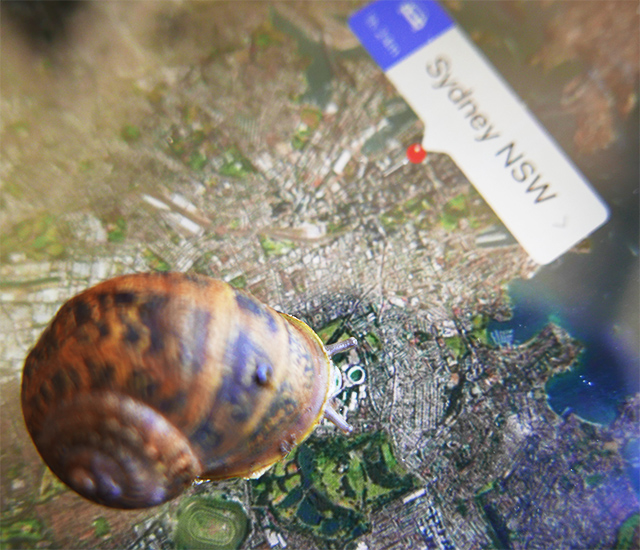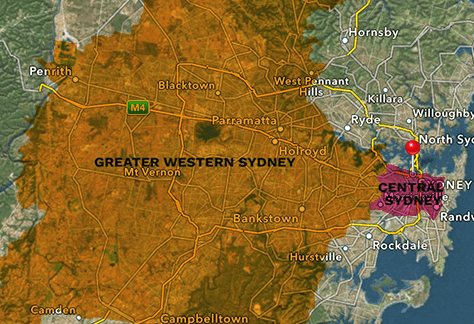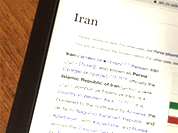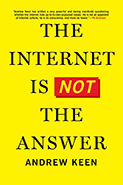Special Issue:
Initiating Change by Design
Editorial
As we approach the end of 2015, GMJ/AU completes its ninth year with a substantial contribution to the field of Design research. This issue is marked by a collection of papers ably guest edited by Dr. Abby Mellick Lopes and Dr. Alison Gill. The papers are drawn from presentations made at a symposium in 2014 titled ‘Initiating Change by Design’. This is not the first time we have dedicated a special issue of GMJ/AU to the Design field. (See Volume 5, Issue 2, 2011.)
The theme of ‘change’ travels through the research exemplars that make up this issue. This is a deliberate intervention in the question of what is at stake in Design practice, and more generally in the kind of knowledge that might issue from these practices. This is therefore a timely contribution to the field that has at its core, concerns with not only what constitutes good design practice, but also with what should drive its ‘raison d’être’. This is an issue replete with reasons about why we need a robust design practice in Australia and beyond; why Design matters; who benefits from it but also where it may be complicit with a dubious politics.
The co-editors have provided a detailed introduction to the issue. It is only left to thank all those who made this issue possible. I am particularly grateful to Dr. Abby Mellick Lopes and Dr. Alison Gill for their guest editing of this issue. Thanks also to Myra Gurney and Roman Goik for their collective efforts in seeing this issue to its completion.
There are a number of issues planned for 2016 (we project 4), the next being a Special Edition titled ‘Climate change, the Media and public debate: the Australian experience’ co-edited by Juan Francisco Salazar and Myra Gurney. We believe that this is a timely topic in light of both the prescience of this issue and the upcoming Paris climate conference, and invite contributions in a range of different forms to be considered for publication. Please see the Call for Papers here.
Finally, perhaps it is fitting that in what will be the 10th year of the journal’s existence in 2016, there is genuine interest and a high level of commitment to producing research and commentary in this space, where politics, cultural technologies, communications and media cross. I commend to you Volume 9 Issue 2.
Hart Cohen
Guest Editorial
The papers presented in this special issue emerged from a postgraduate symposium held at Western Sydney University in April 2014 titled Initiating Change By Design. The idea for this event came about in an attempt to articulate the difference of design research, a question that has special significance in the context of a broad Humanities and Communication Arts school where creative practice research has many forms. Design research itself has many forms, but broadly we claim it is research that thinks through, engages with, or produces, social artifacts. Design is an applied rather than a fine art, and its artifacts are therefore distinctively social in that they are for people to use and share – they form the material infrastructure and visual environments of everyday life. Design research is also, and perhaps less obviously, research that is motivated by the possibility of initiating change in the situations being researched (Crouch & Pearce, 2012) – it can’t help but ask what is this research for? What can it help us to do?
This motivation to create change brings design research close to other forms of research emerging from social sciences. These include forms such as action research or more recently, transition management from systems theory, upon which the newly named discipline of ‘transition design’, which seeks to intentionally influence future cultural sustainability, is based.
All design can however, be seen to have a measure of social agency. In making and remaking the material conditions for everyday life, it either supports the normativity of or challenges existing socio-cultural, technical and political systems. Design research is uniquely placed to interrogate these dynamics and to generate propositions for change. It is a practice invested in the object of inquiry: our learning about how the usually unconscious flow of everyday life has been shaped by design, is swayed by the question of how it might be reshaped. In a practice-led context, design research is also and importantly a mode of reflective practice where judgment and responsibility are activated. In examining our practices, we expose the limits of intuition and reframe design as a form of ‘material thinking’ (Carter, 2004).
Our claim is that this capacity to interrogate and initiate change puts design research in a unique position to contribute to change initiatives across many sectors of society at a time when we face the unprecedented challenges of a climate-changed future and an equally unprecedented demand for creative thinking.
The papers included in this issue test this claim in various ways by focusing on the image – a dimension of designing that takes hold of the ‘eye and mind’ and significantly, perhaps increasingly, composes the environments of everyday life. As the papers in this special issue show, the agency and politics of the image cannot be assumed and requires interrogation. The image departs from the designer and becomes recontextualised in the world where it can function as a medium of communication and ‘presencing’, or equally, political demarcation and concealment. With respect to these dynamics of the image, a point of departure for several papers was Western Sydney as an imagined and experienced environment.
The geographical area of ‘Western Sydney’ names an extensive residential, industrial and rural environment of about 6000 square kilometres encompassing the major cities of Bankstown, Blacktown, Campbelltown, Castle Hill, Fairfield, Liverpool, Parramatta and Penrith, with a population of two million people. Currently the third largest economy in Australia (behind Sydney CBD and Melbourne), Western Sydney is set to experience rapid population growth in the next decades, and with this a need for the creation of thousands of new jobs. It has the highest concentration of immigrants in Australia, particularly the newly arrived.
Western Sydney is a contested landscape with a rapidly developing urban fringe, facing a decline in local food production, and specific climate change challenges including water scarcity, soil degradation, and urban heat islanding (UHI) caused by the combination of hotter and more extreme climate conditions and hard urban development. The livability of Western Sydney is further stressed by car dependency and poor public transport infrastructure. A consequence of these somewhat certain trends and trajectories (which are certainly not unique to Western Sydney), is a diminishment of shared life resources – ‘the commons’. Gibson-Graham et al. (2013) understand the commons as ‘a property, a practice or a knowledge that is shared by a community’ (p. 130). They also usefully specify the everyday practice of ‘commoning’ – making, sharing and regenerating the commons – as enacting the possibility of reclaiming diminished community resources, such as parklands and rivers.
One of the most regionally distinctive and important commons in Western Sydney is its rivers. A map of Western Sydney is veined by extensive river systems. The Nepean and Hawkesbury rivers, Parramatta River and South Creek catchment traverse the region and exist in relation to extensive parklands and recreational areas. The Mapping Urban Resilience working group at Western Sydney University proposed a recoding of Western Sydney as ‘Riverlands, Sydney’ to draw attention to these commons. A central feature of the symposium was the development of a design brief for workshops to explore the idea that design can make a contribution to ‘commoning’ in Western Sydney. We invited a consideration of the ‘Riverlands’ recoding as part of a response to the brief, which asked: how can design activate public engagement in the commons in Riverlands, Sydney? This resulted in a collaborative article included in this special issue and discussed below.
This issue positions the papers of two keynotes at the event together with the research of three postgraduates and a collaborative article emerging from the symposium workshop, to comprise a dialogue about design research with a focus on visual communication design. The mentoring role of lead researchers was to model methodologically inventive, relational and applied thinking. Postgraduate students benefited from their expertise and feedback on research in process. Several papers critically examine the role of collaboration in design as a reflective process, whereby ‘ways of knowing and understanding … [are] co-produced with participants’ (Pink, in this issue). Collaboration involves not simply the ‘pooling’ of different voices, expertise and diverse points of view, but also illuminates the transformative value of maturing ideas and emergent relationships in a process of co-production.
The collaborative research from the symposium workshop opted to question the brief’s premise, positing that a recoded Riverlands Sydney presumed ‘Western Sydney’ as a problem that sat somewhat at odds with the experience of locals coming from inside the region. The article re-imagines Western Sydney through the inventive synthesis of ethnographic and visual design methods to co-produce stories with locals about living in Western Sydney. The paper raises ethical questions about the participant ‘voice’ (resident, researcher, researched) in community experience(s) in relation to place and binaries of insider and outsider. A process of co-design is developed as a proto-method that joins anthropology, ethnography, auto-biography and visual story-telling as the co-authors seek to move away from a problem-oriented approach to designing, and reflect on the perspectives negotiated in everyday life by communities from both inside and outside the region.
Keynote speaker Angela Morelli’s work recognizes the need for narratives about aspects of consumption hidden from view in the flow of everyday life. Information design has a powerful role in showing audiences how things are connected and implicated in larger wholes. However more than enlightening audiences, Morelli goes further to argue for the emotional value of storytelling. An edited transcript of her presentation, ‘A story about telling stories’, walks us through key lessons about her practice of info-graphic storytelling. Relevant to the rise and commercial currency of ‘storytelling’ in marketing contexts, she re-examines from the perspective of the receiver the often-repeated claim that visualisation of information is about the power of stories, to emphasise the critical mechanism of emotion to generate care in the viewer or audience. In relation to her influential virtual water project, she sees care as the conduit to activating change about invisible water consumption – that is the trigger to ask: ‘What can I do with this information?’
In her keynote ‘Ethnography, co-design and emergence: Slow activism for sustainable design’, Sarah Pink examines the collaborative process of social activism and relational planning of the Slow City movement in the UK, Spain and Australia, as germane to a method of co-design or designing together. In the emergence of Katoomba, Western Sydney, as a Slow City, its aspirations for social, economic and political resilience and growth are reimagined across the present-future interface of co-producing sustainable living. Pink interprets the Slow City movement’s framework as a malleable design guide for the activity of town leaders, their planning agendas and into which emergent community expression makes itself.
In ‘Creative outsiders: The creative industries in Western Sydney’, Katrina Sandbach presents her original research on creative arts clusters in Greater Western Sydney. A rich case-study of emerging communities of practice in Western Sydney is the basis for analysing the dialogue between theory and policy-makers on creative industries and urban planning initiatives, and includes strategic interventions to further develop these creative clusters. She goes beyond a description of creative experiences in Western Sydney to underscore how they contribute to a reimagining of Western Sydney and re-conceptualisation of the West.
Michelle Catanzaro poetically unfolds the immersive process of her photographic engagement with the alternative arts and performance spaces of Sydney’s inner west, which she calls ‘irregular’ urban spaces. Crucially requiring sensitivity from the researcher, this is a volatile network of unlicensed venues that must resist public visibility to survive and so the reflective practitioner delicately negotiates capturing the ‘being’ of these spaces and the risk of rendering the invisible visible. Her painstaking analysis of the photographic apparatus as research tool and her role as photographer slowly opens us up to the internal anatomy and soundtrack of spaces that contribute to the imagination of the urban night.
Matt Kiem identifies a problematic kinship between the designing of communications for and against Australia’s violent border protection policies. Informed by the theory of ontological design, the paper interrogates communication designs as forms of ‘mutual orientation’ that work to set the terms of how political debate is understood and enacted. The article critiques the ‘intervention’ strategy Plan 2050, which sought to ‘culture jam’ government communications about the ‘PNG solution’ by promoting a fictional ‘open border’ policy as a way toward recovering national identity. Through incisive analysis, the article shows how this strategy unintentionally replicates the dynamics of border policies by drawing on the common ground of colonial spatial ordering. The paper argues that the political role of communication designs may lie in counter-framing the ‘migration crisis’ by recoding the autonomous movement of migration as a legitimate means of challenging border politics.
Together, these articles provide a view on how design thinks, understands and sees change. In the current ecological and political context, the sort of designing that is needed has to have a memory as well as the ability to think ahead and the sensitivity to know when and where to act or forgo action. In addition, we claim that all design that is concerned about what it is doing and what it is changing, must be research-based. Our aspiration for this issue is to address the unique contribution of design research to initiate and support change as part of the university’s scholarly community. To enhance an understanding of the unique role for design research in facilitating trans and interdisciplinary research going forward, as so much must change.
We want to thank the GMJ editorial team for their support and extensive behind-the-scenes assistance in pulling this issue together. Our thanks and gratitude go to the authors for their repeated diligence and commitment to revising papers, and to the generosity of the peer reviewers for their interest, feedback and endorsement. We also acknowledge the contribution of the 2013 graduating students of the Rabbit Hole studio at Western Sydney University in designing the logo and branding for the Symposium, and Katrina Sandbach for her creative direction and design of the Symposium WordPress site @ https://icd2014.wordpress.com/symposium/.
Dr. Abby Mellick Lopes
Western Sydney University, Australia
Dr. Alison Gill
Western Sydney University, Australia
References
Carter, P. (2004). Material Thinking: the theory and practice of creative research. Melbourne: Melbourne University Publishing.
Crouch, C and Pearce, J. (2013). Doing Research in Design. London: Berg.
Gibson-Graham, J.K., Cameron, J. & Healy, S. (2013). Take back property: Commoning. In Take back the economy: An ethical guide for transforming our communities (pp. 125-158). Minneapolis: University of Minnesota Press.
About the co-editors
Dr. Abby Mellick Lopes is a Senior Lecturer in Design in the School of Humanities and Communication Arts, Western Sydney University. She is currently involved in a collaborative project with ICS researchers to explore ‘cooling the commons’ in Western Sydney, and another on repair cultures with Alison Gill. She has published widely on sustainable design and supervises and examines postgraduate students in design research.
Email: a.lopes@westernsydney.edu.au
Dr. Alison Gill is a Lecturer in Design in the School of Humanities and Communication Arts, Western Sydney University. Her recent research in design is about repair and the role of the image in promoting a sustainable material culture, evident in several journal publications. She supervises and examines postgraduate students in design research.
Email: a.gill@westernsydney.edu.au
Special Issue Refereed Articles
-

Ethnography, Co-design and Emergence: Slow Activism for Sustainable Design
Sarah Pink
Read Abstract Read Article
RMIT University, Australia

Creative Outsiders: Creative Industries in Greater Western Sydney
Katrina Sandbach
Read Abstract Read Article
Western Sydney University, Australia

Making and Sharing the Commons: Reimagining ‘the West’ as Riverlands, Sydney through a Dialogue between Design and Ethnography
Sarah Pink
Read Abstract Read Article
RMIT University, Australia
Michelle Catanzaro
Western Sydney University, Australia
Katrina Sandbach
Western Sydney University, Australia
Alison Barnes
London College of Communication, University of the Arts, UK
Joanne Mcneill
Western Sydney University, Australia
Mitra Gusheh
University of NSW, Australia
Enrico Scotece
Western Sydney University, Australia
Ciro Catanzaro

Photographic Inquiry and the Reflective Practitioner
Michelle Catanzaro
Read Abstract Read Article
Western Sydney University, Australia

The Borders of Communication Design
Matthew Kiem
Read Abstract Read Article
Western Sydney University, Australia
Presentations
-

Angela Morelli — A Story About Telling Stories
Angela Morelli
Read Abstract Read Article
Central Saint Martins, University of the Arts, UK
Refereed Articles
-

How do Iranian Migrant Women in Brisbane Bypass Iranian ICTs Restriction to Stay Connected with Their Homeland?
Sahel Farshbaf Shaker
Read Abstract Read Article
University of Queensland, Australia
Essays
-

The New Latin American Journalistic Crónica, Emotions and Hidden Signs of Reality
Antonio Castillo
Read Abstract Read Article
RMIT University, Australia
Book Reviews
-

Foreign Correspondents and International Newsgathering: The Role of Fixers
Majid Khan
Read Review
RMIT University, Australia
Daily News, Eternal Stories: The Mythological Role of Journalism
Eloise Florence
Read Review
RMIT University, Australia
Designing News: Changing the World of Editorial Design and Infographics
Jael Rincón
Read Review
RMIT University, Australia

